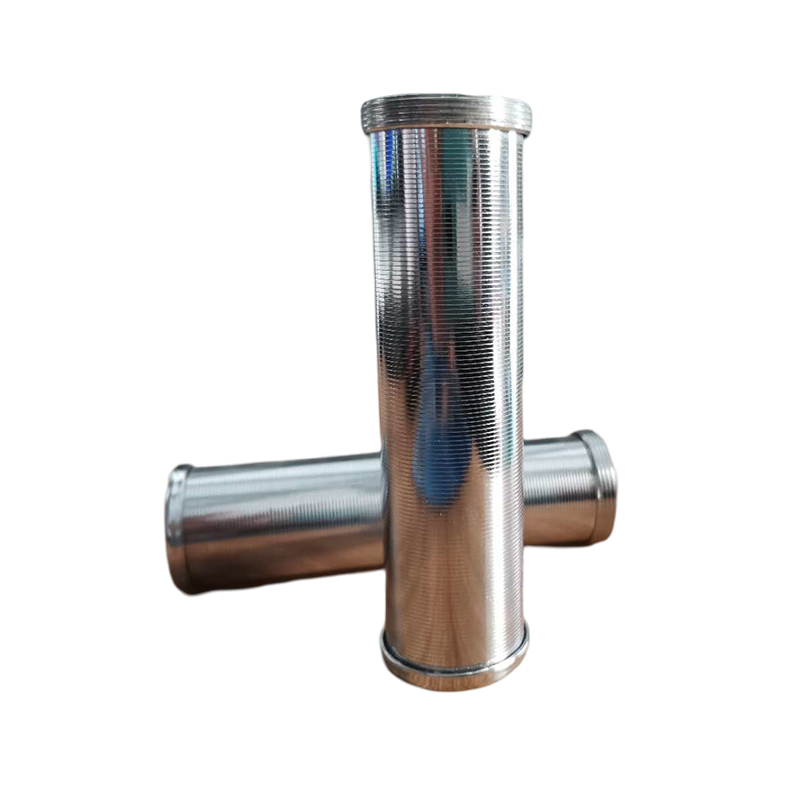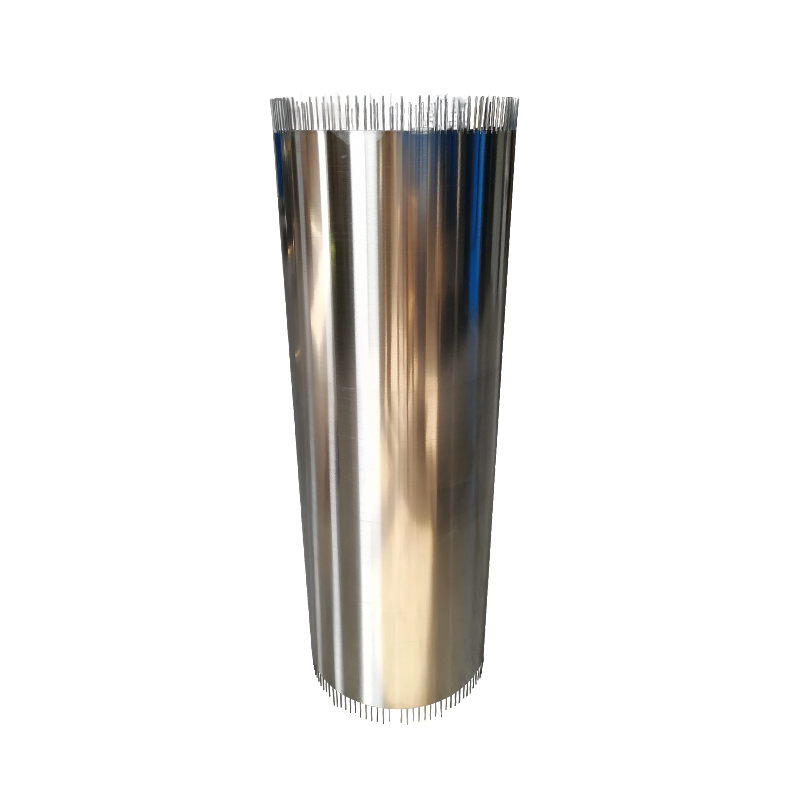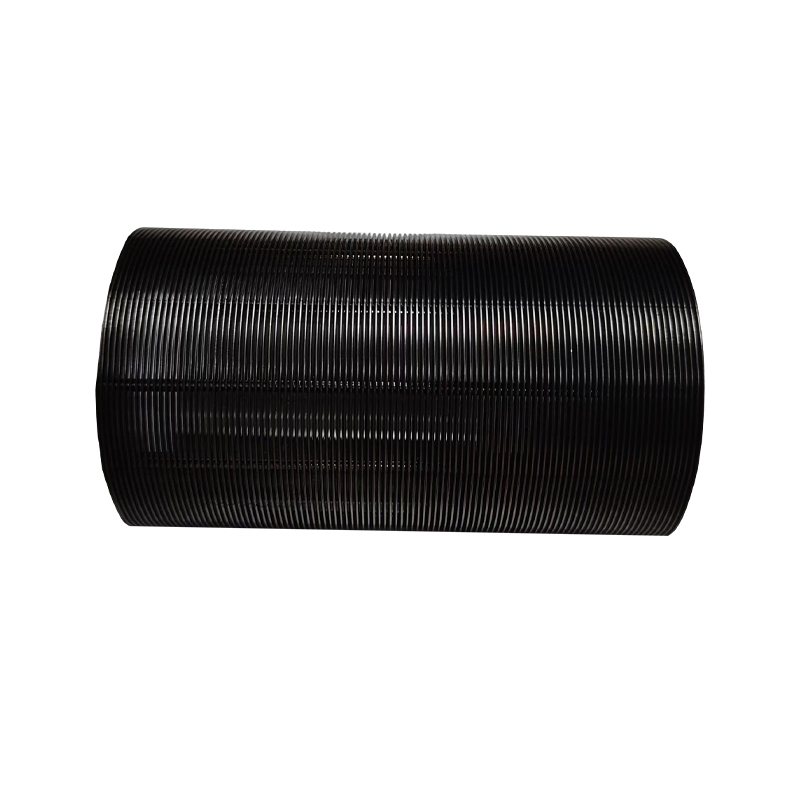How does the unique structure of oil casing improve its anti-clogging performance?
Release Time : 2025-05-15
In the process of oil and gas extraction, oil casing is one of the key components of downhole operations, and its performance directly affects production efficiency and equipment life. In order to cope with complex and changing formation conditions and prevent problems such as sand and gravel blockage, modern oil casing adopts a unique design structure, which significantly improves its anti-clogging performance.
1. V-shaped cross-section and intersection design
The oil casing adopts a V-shaped cross-section design. This structure not only enhances the overall strength, but also improves the anti-clogging performance by optimizing the fluid channel. The intersection of each V-shaped cross-section is carefully designed to avoid dead corners and easy-to-clog areas that are prone to traditional screens. Specifically:
No dead corner design: The V-shaped cross-section makes the liquid flow path smoother, reduces the retention area, and reduces the possibility of sediment accumulation.
Intersection optimization: The design at the intersection takes into account the principles of fluid dynamics to ensure that the water flow can pass smoothly and effectively avoid the accumulation of particulate matter even in high-pressure environments.
2. Opening area of continuous gaps
Traditional screens usually have fixed apertures or gaps, which may lead to erosion and wear due to excessive flow rate under high flow conditions, or blockage due to too small openings. In contrast, the oil casing adopts a continuous gap design, which has the following advantages:
Larger opening area: The continuous gap provides a larger opening area than traditional screens, allowing more fluid to pass through while slowing down the speed of entering the screen. The lower flow rate helps to reduce the impact force on the screen, extend the service life, and reduce the risk of sand and gravel entering the screen due to high-speed fluid.
Uniformly distributed pressure: The larger opening area makes the pressure distribution more uniform, avoiding deformation or damage caused by excessive local pressure, and further enhancing the anti-blocking performance.
3. The role of longitudinal support rods
In addition to the V-shaped section and continuous gaps, the oil casing is also equipped with longitudinal support rods, which play a vital role in the entire structure:
Enhanced mechanical strength: The longitudinal support rods provide additional support for the entire oil casing, enabling it to maintain shape stability under extreme working conditions and prevent deformation caused by external pressure or internal fluid impact.
Protect the screen from direct impact: The presence of the support rods can effectively disperse the pressure from the outside world and prevent solid particles such as sand and gravel from directly hitting the surface of the screen, thereby reducing the probability of the screen being punctured or damaged.
Promote fluid flow: The space between the support rods also constitutes part of the fluid channel. They work together with the V-shaped section and continuous gaps to promote the smooth flow of fluid and reduce the risk of blockage.
4. Shrinkage and good mechanical properties
The design of oil casing not only focuses on anti-blocking performance, but also takes into account the selection of materials and structural design to ensure good mechanical properties, especially shrinkage:
Shrinkage: Due to the use of special materials and structural design, oil casing has a strong shrinkage ability, which means that it can adapt to the stress changes caused by stratum changes to a certain extent without breaking or failing.
Pressure resistance and durability: Good mechanical properties enable oil casing to work normally under high pressure, resist the erosion of sand and gravel and other impurities for a long time, and maintain efficient filtering effect.
5. High-efficiency sand and gravel filtration
Finally, all the above design features work together to make oil casing perform well in preventing sand and gravel intrusion:
Blocking fine sand: Despite the large opening area, the reasonable gap size can still effectively block fine sand particles, ensuring that only purified fluid can enter the well.
Adapting to different pressure conditions: Whether under low or high pressure conditions, oil casing can work stably and will not cause sand and gravel to penetrate due to pressure fluctuations, thereby better protecting the production equipment downhole.
In summary, oil casing greatly improves its anti-clogging performance through the combination of unique V-shaped cross-section, continuous gap design and longitudinal support rods. This innovative design not only solves the common clogging problem of traditional screens, but also shows significant advantages in improving filtration efficiency and extending service life, making it an ideal choice in modern oil and gas production.
1. V-shaped cross-section and intersection design
The oil casing adopts a V-shaped cross-section design. This structure not only enhances the overall strength, but also improves the anti-clogging performance by optimizing the fluid channel. The intersection of each V-shaped cross-section is carefully designed to avoid dead corners and easy-to-clog areas that are prone to traditional screens. Specifically:
No dead corner design: The V-shaped cross-section makes the liquid flow path smoother, reduces the retention area, and reduces the possibility of sediment accumulation.
Intersection optimization: The design at the intersection takes into account the principles of fluid dynamics to ensure that the water flow can pass smoothly and effectively avoid the accumulation of particulate matter even in high-pressure environments.
2. Opening area of continuous gaps
Traditional screens usually have fixed apertures or gaps, which may lead to erosion and wear due to excessive flow rate under high flow conditions, or blockage due to too small openings. In contrast, the oil casing adopts a continuous gap design, which has the following advantages:
Larger opening area: The continuous gap provides a larger opening area than traditional screens, allowing more fluid to pass through while slowing down the speed of entering the screen. The lower flow rate helps to reduce the impact force on the screen, extend the service life, and reduce the risk of sand and gravel entering the screen due to high-speed fluid.
Uniformly distributed pressure: The larger opening area makes the pressure distribution more uniform, avoiding deformation or damage caused by excessive local pressure, and further enhancing the anti-blocking performance.
3. The role of longitudinal support rods
In addition to the V-shaped section and continuous gaps, the oil casing is also equipped with longitudinal support rods, which play a vital role in the entire structure:
Enhanced mechanical strength: The longitudinal support rods provide additional support for the entire oil casing, enabling it to maintain shape stability under extreme working conditions and prevent deformation caused by external pressure or internal fluid impact.
Protect the screen from direct impact: The presence of the support rods can effectively disperse the pressure from the outside world and prevent solid particles such as sand and gravel from directly hitting the surface of the screen, thereby reducing the probability of the screen being punctured or damaged.
Promote fluid flow: The space between the support rods also constitutes part of the fluid channel. They work together with the V-shaped section and continuous gaps to promote the smooth flow of fluid and reduce the risk of blockage.
4. Shrinkage and good mechanical properties
The design of oil casing not only focuses on anti-blocking performance, but also takes into account the selection of materials and structural design to ensure good mechanical properties, especially shrinkage:
Shrinkage: Due to the use of special materials and structural design, oil casing has a strong shrinkage ability, which means that it can adapt to the stress changes caused by stratum changes to a certain extent without breaking or failing.
Pressure resistance and durability: Good mechanical properties enable oil casing to work normally under high pressure, resist the erosion of sand and gravel and other impurities for a long time, and maintain efficient filtering effect.
5. High-efficiency sand and gravel filtration
Finally, all the above design features work together to make oil casing perform well in preventing sand and gravel intrusion:
Blocking fine sand: Despite the large opening area, the reasonable gap size can still effectively block fine sand particles, ensuring that only purified fluid can enter the well.
Adapting to different pressure conditions: Whether under low or high pressure conditions, oil casing can work stably and will not cause sand and gravel to penetrate due to pressure fluctuations, thereby better protecting the production equipment downhole.
In summary, oil casing greatly improves its anti-clogging performance through the combination of unique V-shaped cross-section, continuous gap design and longitudinal support rods. This innovative design not only solves the common clogging problem of traditional screens, but also shows significant advantages in improving filtration efficiency and extending service life, making it an ideal choice in modern oil and gas production.







